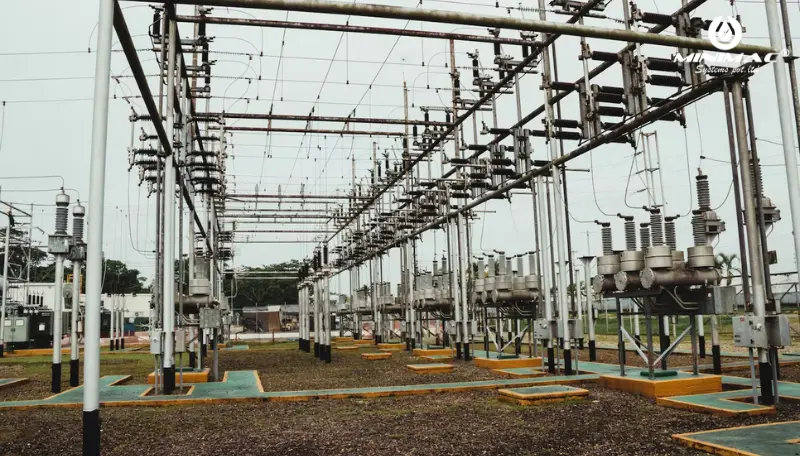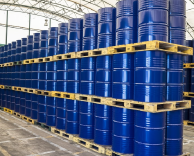Transformer Oil Filtration Systems Explained: Your Key to Energy Reliability
Introduction
Transformer oil: A life source of transformers. Transformer oil is a critical component in the electrical power distribution sector that provides safe and efficient transformer operations. But gradually, it may absorb moisture, particles, and gases, and can reduce the insulating property of the oil and affect the functioning of the transformer. Keeping the transformer oil clean, dry, and free from impurities is critical to ensure the reliable operation of transformers, and this transformer oil filtration system plays a vital role in this regard. In this all-inclusive guide, we will be discussing everything about transformer oil filtration systems you need to know, along with the benefits, types of transformer oil filtration systems, the process of filtration, and applications across various industries.

Understanding Transformer Oil Filtration
The transformer oil filtration process involves the separation and removal of impurities from transformer oil, including water, dissolved gases, particulate matter, and acids. Such impurities are harmful to your transformer's performance, insulation property, and service life. Transformer oil is subjected to a number of factors that can eventually cause it to degrade over time, such as excessive heat, arcing, and chemical reactions with materials in the transformer. When they fuel the transformer through its oil filtering system, the operators can improve oil quality to an acceptable level and keep the transformer running for an extended time period.
Key Benefits of Transformer Oil Filtration Systems
There are several game-changing benefits of transformer oil filtration systems, which aid in the long-term reliability and efficiency of transformers. These benefits include:
- Improved insulation efficiency
- Extended Transformer Lifespan
- Enhanced Reliability
- Cost Savings
- Compliance Industry Standards
Transformer oil is chiefly used to insulate the internal parts of transformers. Contaminated oil loses its insulating properties and can ultimately result in electrical failure. There are transformer oil filtration machines that filter out much moisture, particles, and gases dissolved in the oil, and these machines restore the insulating efficiency of the oil and can prevent short circuits and breakdowns.
Operating on the principle of keeping the transformer oil free from impurities and dirt, these filtration systems help in avoiding the accumulation of contaminants, which would otherwise accelerate the ageing of the internal components of the transformer. Thus increasing the overall life of the transformer, thereby minimizing expensive replacements and repairs.
Typical downtime from transformer failures can be long and can require expensive repairs. Keeping the oil "clean" helps minimize the risk of such failures and regular filtration of the oil will help. This enables the transformer to work at its rated capacity with a lower probability of system disturbances and increases the reliability of the system.
Transformer oil filtration systems save money by extending the service life and preventing transformer failures. This minimizes the need for costly repairs, replacements, and maintenance, all translating to lower operational costs over time.
Filtration of transformer oil at regular intervals transforms the oil into a non-hazardous material that saves the organization from safety and environmental regulation violations. This is particularly critical in industries in which transformers operate in sensitive environments where health, safety, and environmental protection are subject to high standards.
Types of Transformer Oil Filtration Systems
There are different kinds of transformer oil filtration systems, and each of them is designed for specific needs and conditions. The type of system selected is dependent on the extent of contamination, the type of transformer, and the maintenance frequency requirement.
- Offline Transformer Oil Filtration Systems
- Online Transformer Oil Filtration Systems
- Vacuum Oil Filtration Systems
- Centrifugal Oil Filtration Systems
- Coalescer Separator Filtration Systems
Offline filtration units work when the transformer is out of service. The transformer oil is drained from the transformer and is transferred through a transformer oil filter machine to remove water, particulates, and other impurities. The above process can be repeated periodically, so the operators can get their ordinary maintenance habits without considering transformer interruption.
Traditionally, the filtration systems that are used offline are used, but online filtration systems run in service only. Oil with no possible contamination, these systems filter this oil continuously while it circulates in the transformer. For critical transformers that cannot afford downtime online system would be the one you are looking for.
This is one of the types of vacuum filtration systems, which use a vacuum to separate dissolved gases and moisture from transformer oil. A vacuum chamber is filled with low-pressure oil, and the contaminants evaporate and are driven off away from the oil. This kind of filtration is very efficient for removing free and dissolved moisture and gases that affect the performance of the transformer.
Centrifugal Filtration Systems: Centrifugal filtration systems use high-speed rotation to segregate the solid impurities from the oil. As particles are pushed outward due to the centrifugal effect, these are gathered and sucked away. This system is really good for the filtration of big particles and sediments in the oil.
Coalescer and separator systems are used for water removal from transformer oil by separating water droplets from the oil. So, coalescers one by one attract water molecules, and coalesce them into larger sizes, and can be separated easily from the oil. Such systems are best suited for transformers with water exposure potential.
Step-by-Step Process of Transformer Oil Filtration
Usually, these crucial steps are followed in the process of transformer oil filtration:
- Oil Sampling
- Pumping the Oil
- Filtration
- Oil Reconditioning
- Reintroducing the Oil
A sample of the transformer oil is taken for the evaluation of its condition before filtration. This step defines the degree of pollution and leads to the choice of the right method of filtration.
The oil is pumped from the transformer into the filtration unit. In offline systems, this may mean taking the transformer offline to process the oil for filtration cleaning.
The oil flows through the filter media, where moisture, particulate matter, and gases are eliminated from the oil. Depending on the requirements, the filtration unit can employ a vacuum, centrifugal, or coalescer filtration method.
After the oil contaminants are eliminated, the oil is reconditioned to get back the insulating quality of the oil. This can include the addition of additives or additional treatments designed to improve oil in service performance.
At this point, the oil can now either be filtered to a clean and/or filtered and conditioned to a high standard and returned to the transformer, where it ensures that the equipment continues to operate in clean quality oil. The system can then monitor the condition of the oil, allowing it to keep performing at its best.
For More Information Minimac Systems Transformer Oil Filtration - Click Here
Application Across Industries
Transformer oil filtration systems are in great demand in different industries as transformers are an essential part of power generation and distribution. These include:
- Power Generation
- Oil and Gas
- Industrial Manufacturing
- Renewable Energy
Transformers are used in power plants to either step up or step down the voltage for the successful transmission of electricity. It is thus critical that these transformers run fine with the help of Transformer oil filtration machines to minimize power failures and utilize maximum energy possible.
Wikipedia Imagine you are an oil and gasographer/mapper/energy expert who utilizes electrical infrastructure in remote places, the oil and gas industry has a huge reliance on transformers for external power supplies. The oil filtration transformers mainly play an important role in maintaining the good functioning and safety of the transformer in these harsh conditions.
Transformers are mainly used by manufacturers to power machinery and equipment in large industrial establishments. Keeping up the quality of transformer oil is very important to reduce downtime and ensure that the production processes can run without any interruptions.
As more and more renewable energy projects (such as wind turbines and solar panels) go online, transformers are increasingly used to help manage this energy. By enabling these essential systems to run with little to no downtime, transformer oil filtration also enhances the efficiency of renewable production.
Transformer Oil Filtration System – Maintenance and services
Hard dumps and lavish filtration of transformer oil filtration systems are rudimentary to keep them working effectively. Routine inspections, oil sampling, and filter changes are part of it to prevent contaminants. Several manufacturers like Minimac also provide end-to-end solutions to manage and monitor transformer oil filtration machines, ensuring that organizations relying on such critical assets are stress-free.
What are the benefits of the use of Minimac Transformer Oil Filtration systems?
Minimac Transformer Oil Filtration Systems are state-of-the-art products designed for high performance and reliability. Designed with the highest concern for quality, safety, and customer satisfaction, Minimac systems are your best unique solution for transformer oil purity maintenance in multiple industrial application areas. These innovative designs help assure transformer operation virtually continuously with high availability and low maintenance costs, making them a reliable partner for businesses in many countries.
How to Choose the Correct Transformer Oil Filtration System
There are certain factors to consider while choosing the transformer oil filtration system: type of transformer, where it is operated, and the filtration needs. Consulting experts is key to choosing the correct system for your application to achieve optimal efficiency and maximum reliability.
Maintenance best practices to make energy reliability a reality
Best practices to maintain the performance of transformer oil filtration systems. Regularly monitoring the condition of the oil, scheduling maintenance, and addressing any issues as they arise can go a long way towards improving the reliability of your transformers and thus enhancing the stability of your energy infrastructure overall.
Conclusion
To summarize, using transformer oil filtration systems is an essential procedure to preserve transformer reliability, performance, and longevity. These systems maintain the cleanliness and contaminant-free state of transformer oil, thus enabling the transformers to function well and eliminating costly breakdowns while enhancing the overall reliability of energy. Optimal performance can only be experienced if you select the correct filtration system and maintain it properly. Minimac provides world-class transformer oil filtration solutions with the highest scope of safety, efficiency, and reliability.
Learn more about our services and industry insights by visiting our official LinkedIn page: Minimac Systems
FAQs:
- Oil Sampling – Measuring Levels of Contamination
- Pump the Oil – The oil is pumped into the filtration unit.
- Filtration – Uses physical and mechanical means (vacuum, centrifugal, coalescer, etc.) to remove contaminants
- Oil reconditioning / recondition – restores insulating qualities.
- Introducing the Oil – How Clean Oil Gets Back into a Transformer
- Preventative Maintenance – To prevent problems, regular inspections and filtration
- Predictive Maintenance — Tracking the condition of oil and the transformer to forecast failures.
- Reactive Maintenance – Repairing faults/failures to regain functionality.
- Dielectric Strength Test: Determines the insulating ability
- Moisture Content Test: Identifies levels of moisture.
- Dissolved Gas Analysis (DGA): Gases reflecting faults
- Acidity Test: Determines the degree of chemical decomposition





